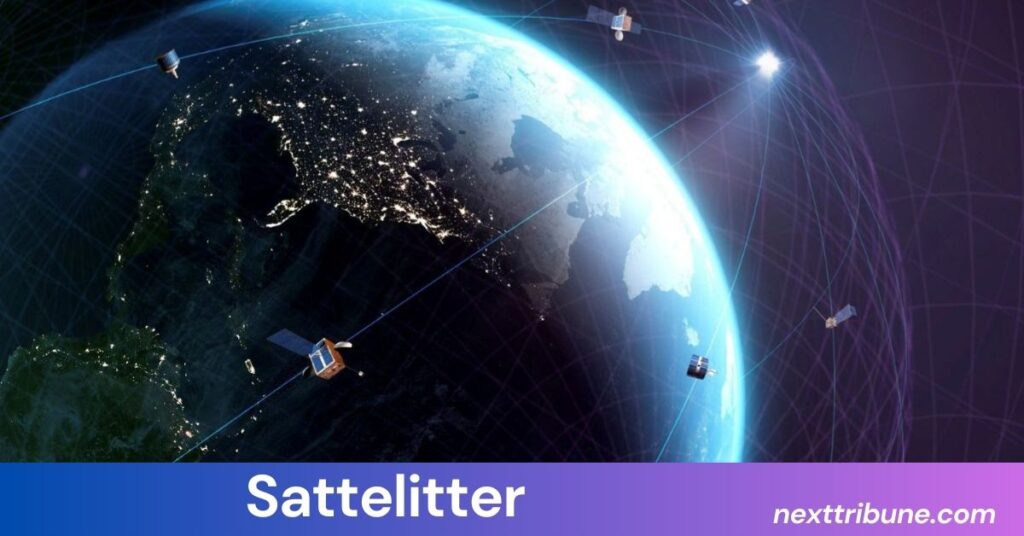
In today’s digital world, satellites play a crucial role in various aspects of life, from communication and navigation to weather forecasting and scientific research. But what exactly is a “sattelitter,” and how does it relate to the more common term “satellite”?
In this article, we will delve into the concept of “sattelitter,” its usage, and its significance. We will explore its meaning in different contexts and provide answers to frequently asked questions to help you gain a deeper understanding of this term.
What is Sattelitter?
“Sattelitter” is the plural form of the Norwegian word “satellitt,” which means “satellite.” While it may appear to be a misspelling or variation of the word “satellite,” it is actually an accepted term in Norwegian and other Scandinavian languages.
The term “sattelitter” is used to refer to multiple satellites in the context of space exploration, communication, and other technologies that rely on artificial satellites orbiting the Earth.

To clarify, in English, we typically use the word “satellites” to describe these objects. However, the Norwegian “sattelitter” serves the same purpose and refers to more than one satellite.
The Importance of Satellites (Sattelitter)
Satellites, or sattelitter in Norwegian, are crucial for modern life. They are used in numerous applications, such as:
Also Read: Catherine Ho Radiology: A Comprehensive Guide to Expertise in Medical Imaging
- Communication: Satellites enable global communication, including television broadcasting, internet services, and mobile phone networks. Without them, long-distance communication would be much slower and less reliable.
- Navigation: GPS (Global Positioning System) satellites are used to provide precise location data for navigation systems in cars, airplanes, smartphones, and even ships. These satellites are part of a larger constellation that helps ensure accurate positioning worldwide.
- Weather Forecasting: Weather satellites, also known as weather sattelitter, monitor atmospheric conditions, track storms, and gather data that meteorologists use to predict weather patterns. These satellites provide vital information for public safety and disaster management.
- Scientific Research: Satellites are also used for scientific research, including studying Earth’s environment, monitoring climate change, and exploring outer space. Telescopes and other instruments aboard satellites help scientists gather data from space that would otherwise be impossible to obtain.
- Military and Security Applications: Many countries use satellites for surveillance, reconnaissance, and communication in military operations. Sattelitter play an important role in national defense by providing real-time information on troop movements, enemy activities, and strategic operations.
How Do Satellites (Sattelitter) Work?
Satellites are designed to orbit the Earth or other celestial bodies. They are launched into space aboard rockets, where they are placed into specific orbits based on their purpose. Once in orbit, sattelitter are powered by solar panels, which generate electricity, and are equipped with various instruments to carry out their tasks.
Satellites can be divided into several types based on their functions:
- Geostationary Satellites: These satellites orbit the Earth at a fixed position above the equator, allowing them to remain over the same area at all times. This makes them ideal for communication and weather monitoring.
- Low Earth Orbit (LEO) Satellites: These satellites orbit much closer to the Earth, typically at altitudes of 300 to 1,200 miles. They are used for imaging, remote sensing, and scientific research.
- Medium Earth Orbit (MEO) Satellites: These satellites are located between LEO and geostationary satellites. GPS satellites are an example of MEO satellites, as they provide location data to users around the world.
The Evolution of Satellites (Sattelitter)
The history of satellites dates back to the 1950s when the first artificial satellite, Sputnik 1, was launched by the Soviet Union in 1957. This marked the beginning of the space race and the dawn of satellite technology.
Since then, satellites have evolved significantly, with advancements in technology allowing for smaller, more efficient, and more powerful sattelitter. Today, satellites are used for a wide range of purposes, from providing internet access to remote areas to monitoring environmental changes on Earth.
Also Read: How to Use 1.5f8-p1uzt: A Comprehensive Guide
Key Milestones in Satellite History
- Sputnik 1 (1957): The first artificial satellite launched by the Soviet Union, marking the beginning of the space age.
- Explorer 1 (1958): The first U.S. satellite, which helped discover the Van Allen radiation belts.
- Communication Satellites (1960s): Early communication satellites like Telstar and Syncom revolutionized long-distance communication.
- GPS System (1978): The launch of the first GPS satellite, which formed the basis for the modern GPS system used today.
- Hubble Space Telescope (1990): Launched into orbit to provide stunning images and data about distant galaxies and stars.
Sattelitter in Modern Applications
Communication
Modern sattelitter are indispensable in providing reliable communication services across the globe. From global satellite TV broadcasts to internet connections in remote regions, these satellites bridge vast distances and make real-time communication possible.
One of the most significant advancements in satellite communication is the development of low Earth orbit satellites, which are now being deployed in large constellations to provide global internet coverage. These constellations include companies like SpaceX’s Starlink, which aims to provide high-speed internet access to underserved and rural areas.
Navigation
GPS technology has become integral to modern life, with millions of people relying on GPS satellites for navigation. GPS satellites orbit the Earth at medium altitudes and transmit signals to devices on the ground, such as smartphones, car navigation systems, and airplanes.
The global positioning system is based on a network of satellites that provide precise location data with minimal latency, making it an essential tool for travelers, businesses, and emergency services.
Earth Observation
Satellites are also used for Earth observation, providing crucial data on everything from weather patterns to environmental changes. These satellites help monitor the health of our planet, including tracking deforestation, air quality, and ocean temperatures.
Organizations like NASA and the European Space Agency rely on Earth observation satellites to study climate change and predict natural disasters such as hurricanes and wildfires. The data collected by these sattelitter is vital for scientists and policymakers working to mitigate the impacts of climate change.
Military and Defense
The role of sattelitter in military applications cannot be overstated. Military satellites are used for surveillance, reconnaissance, and secure communication. They help provide real-time intelligence, monitor potential threats, and support military operations.
Countries invest heavily in satellite technology to maintain a strategic advantage in defense and security. These satellites can track enemy movements, monitor borders, and gather intelligence, which is critical for national security.
Future of Sattelitter and Space Exploration
The future of sattelitter is exciting, with new technologies and applications emerging rapidly. Some key trends shaping the future of satellites include:
Also Read: Basil Fomanka: A Visionary in Mental Health Care and Psychiatric Nursing
- Mega Constellations: The deployment of large networks of small satellites, or mega constellations, to provide global internet coverage, improve communication, and enable faster data transmission.
- Miniaturization: As technology advances, satellites are becoming smaller and more affordable. Small satellites, or “smallsats,” are increasingly being used for a wide range of applications, from Earth observation to scientific research.
- Interplanetary Exploration: While most satellites focus on Earth, there are growing efforts to explore other planets and moons in our solar system. Satellites are being used in missions to Mars, the Moon, and beyond, helping to gather data for future human exploration.
- Satellite-Based Internet: The development of satellite-based internet systems promises to bring high-speed internet to remote and underserved areas. Companies like SpaceX, Amazon, and OneWeb are leading the way in launching satellite constellations for global internet connectivity.
FAQs About Sattelitter
What is the difference between sattelitter and satellites?
Sattelitter is simply the Norwegian word for satellites. It is the plural form of “satellitt,” which means satellite in Norwegian.
How many satellites are currently in orbit?
As of 2025, there are more than 3,000 active satellites in orbit around the Earth. This number continues to grow as new satellites are launched for various purposes.
How do satellites stay in orbit?
Satellites stay in orbit due to the balance between gravitational forces and the satellite’s velocity. This combination allows them to continuously “fall” toward the Earth while moving fast enough to avoid crashing.
Can sattelitter be used for global internet coverage?
Yes, satellite constellations, such as SpaceX’s Starlink, are being used to provide internet access to remote and rural areas that lack traditional broadband infrastructure.
What is the lifespan of a satellite?
The lifespan of a satellite varies depending on its design and mission, but most satellites are built to last between 10 to 15 years before they are decommissioned or replaced.
Conclusion
Sattelitter, or satellites, play an indispensable role in modern society. They enable communication, navigation, weather forecasting, scientific research, and military operations, among other essential functions. As technology advances, the future of sattelitter holds even more promise, with innovations such as mega constellations, miniaturization, and satellite-based internet shaping the way we connect and explore the world around us.
Whether you’re navigating to your destination or watching your favorite TV show, sattelitter are silently supporting your daily life. Understanding their importance helps us appreciate the critical role these technological marvels play in our interconnected world.



